Commercial insurance rates have been rising over the past decade and show no signs of stopping. Businesses need to take proactive steps to manage risk to keep their insurance costs as low as possible. Many factors influence commercial insurance rates, and businesses need to be aware of them all.
Since 2011, auto insurance premiums have risen at a double-digit rate on an annual basis, with accident and claim costs spiking. According to a recent study by Risk Placement Services, the trucking sector has been the most affected by rising rates. The rate hikes are due to a number of factors in the trucking business. One of the biggest reasons is that insurers have struggled to keep pace with growing accidents and spiraling claim costs, leaving them in the red for over ten years. High car insurance rates have resulted from numerous problems, including significant court judgments, higher maintenance costs, reduced freight demand, and a lack of drivers, among other factors.
In this article, we will discuss the trends that are driving up commercial insurance rates, and we will also talk about some risk management techniques that can help businesses keep costs down.
What Are The Commercial Auto Insurance Cost Factors?
When it comes to commercial auto insurance, price is determined by several factors. Commercial vehicles are typically more expensive to insure than personal vehicles. This is due to the increased risk of accidents and liability claims. Business owners should be aware that their driving records will also impact the cost of car insurance. A clean driving record will result in lower premiums than a history of accidents or tickets. Commercial auto insurance pricing is partially determined by the following:
Type of Industry
The type of industry that a business is in will impact the cost of insurance. For example, businesses in the transportation or construction industries are at a higher risk for accidents and thus, pay more for insurance. The exposure of a construction company with numerous commercial vehicles is far greater than that of an accounting firm that only occasionally employs a vehicle for various errands.
Geographical Location
The geographical location of a business also plays a role in the cost of insurance. Businesses located in high-risk areas, such as major cities, will pay more for coverage than those located in rural areas.
The average expenditure also differs from one state to another. In 2019, for example, the highest expenditures were in Louisiana ($1,557.22), followed by Michigan ($1,495.94) and New York ($1,445.30). The lowest expenditures by state were in Maine ($696.37), North Dakota ($703.73), and Iowa ($714.86). By comparison, average expenditures in these aforementioned states in 2015 were $1,254.37 (Louisiana), $1,268.10 (Michigan), $1,245.32 (New York), $608.94 (Iowa), $637.24 (North Dakota), and $619.16 (Maine).
Type of Vehicles
The type of vehicles that a business uses will also affect the cost of insurance. Companies that use high-risk vehicles, such as commercial trucks or vans, will pay more for coverage than those that use standard passenger cars. Your premium will vary depending on your vehicle’s year, size, and usage. A delivery van that is a few years old but is still in excellent working condition may be less expensive to insure than a new cargo van used more frequently by a freight transportation business. The AAA’s 2021 study, ‘Your Driving Costs,’ found that the average cost of owning and operating a 2021 model automobile was $9,666 in 2021, when the vehicle is driven 15,000 miles each year. The average full-coverage insurance expenditure for medium sedans was $1,403 compared with $1,296 for medium SUVs. The overall insurance price for all vehicles was $1,342.
The Type, Amount, and Extent of Coverage
The type, amount, and extent of coverage will also have an impact on the cost of insurance. Businesses that choose to carry more comprehensive coverage will pay more for premiums than those that do not. In addition, companies that insure multiple vehicles will pay less per vehicle than those that only insure a single-vehicle.
You can choose from a number of coverage types and endorsements for business auto insurance, each of which impacts the overall premium cost. With more coverage, your commercial auto liability insurance rate will rise. For example, a $1 million liability policy will have a considerably higher premium than a policy with state minimum liability limits.
Other Commercial Auto Insurance Cost Factors
Other factors that will impact the cost of commercial auto insurance include the following:
- Claims history – All insurance companies request a motor vehicle report on all commercial-vehicle drivers who have access to your listed company vehicles. Poor driving history or several accidents or infractions will raise your premium. It’s typical for the insurer to consider your entire driving record over the previous three years.
- Credit History – If your company has a poor credit history, you may be required to pay more for business auto insurance.
- Total Number of Employees – Auto insurance companies often quote commercial rates also based on the total number of people employed.
- Fleet Value – Insuring one or two commercial vehicles costs less than insuring a dozen semi-trucks, and your auto insurance rate will vary depending on the coverage you choose. Commercial vehicle insurance policies frequently have a percentage of the vehicle or fleet value as property damage coverage.
- Driving Distances – If your drivers travel long distances or make interstate trips, you’ll generally pay more for commercial auto insurance.
- Parking Location – The location where your cars are kept affects your commercial auto insurance premium. Businesses in high-risk areas for vandalism, car theft, and crime will pay more for their coverage.
- Deductibles – If your firm can afford a higher out-of-pocket deductible in the event of a claim, you may save money on premiums.
- Cargo Type – If you transport hazardous materials, your insurance premiums will be greater than if you were to transport innocuous things. The same is true for transporting high-value items as opposed to less expensive products.
All of these imply that while the inherent level of risk your firm is exposed to influences the premium you will pay for vehicle insurance, other factors external to the company also influence it. Below are some trends that have sent commercial insurance rates skyrocketing over the past decade.
How and Why Have Commercial Insurance Rates Been Constantly Increasing?
For the better part of a decade, a confluence of circumstances has had a significant impact on insurers’ earnings. According to a recent Conning, Inc. study, the industry’s Commercial Auto combined ratio has averaged an unacceptably high 107% since 2010. The same document notes that commercial auto has accounted for $22.4 billion in underwriting losses for the sector over the last five years (2015-2019).
Other studies have shown that the losses incurred for commercial auto insurance rose from $14.987 billion in terms of liability and $4.279 billion in terms of physical damage in 2016 to $19.313 billion and $4.813 billion respectively in 2020.
The major factors contributing to this trend include the following:
- Driver Shortage – Many consumers with transportation risks have experienced a demographic change in recent years and are expected to get even worse in the future. According to one research, 57 percent of today’s experienced drivers are over 45 years old, while 23% are over 55. Younger drivers aren’t entering the workforce in sufficient numbers to meet demand. As the transportation business races to hire more drivers, who are usually in their twenties, they must deal with having a higher number of inexperienced drivers who are more likely to be involved in accidents.
- Driver Distractions – Drivers are increasingly distracted by activities such as texting, talking on the phone, and using the internet while driving. According to the Insurance Institute for Highway Safety (IIHS), based on national police-reported data on fatal accidents in the United States during 2019, 3,142 people died in motor vehicle incidents involving distraction being a factor. That is nearly 9% of all crash fatalities. To make matters worse, hands-free devices were also shown to contribute to driving accident distractions.
- Marijuana Legalization – As more states remove criminal penalties for using or possessing marijuana, a new category of impaired driving has emerged. According to the IIHS, with the legalization of cannabis across the United States, crash rates have also risen.
- Worsening Crash Severity – The worsening of automobile accidents has been a recent and disturbing trend. As the coronavirus pandemic severely impacted business activity in 2020, vehicle miles traveled (VMT) dropped significantly. However, fatalities per VMT increased by more than 23% yearly. Overall, motor vehicle deaths rose 5%.
- Rising Maintenance Costs – Nearly half of the cost of a new automobile (40%) is accounted for in advanced, built-in electronics. Businesses are not just replacing bumpers anymore. They’re also replacing high-cost hardware like cameras and sensors, as well as paying extra labor costs for trained experts to install and reset those components into the vehicle’s onboard control environment.
- Crumbling Infrastructure – Truck accidents are becoming more common as our nation’s crumbling roads and bridges put additional strain on moving vehicles, making them more likely to suffer more accidents and wear-and-tear.
- Jury Verdicts Are High and Still Growing – Since 2012, the number of transportation industry damage claims worth more than $10 million in compensation for injuries and property damage has been on the rise. Because claims for bodily injuries can sometimes take years to resolve, insurance companies may initially underestimate the final loss amounts. According to one research, the average verdict size for cases above $1 million involving a truck accident increased nearly 1,000% from 2010 to 2018, from $2.3 million to $22.3 million.
How To Manage Risk In The Face Of Increasing Commercial Auto Insurance Rates?
The best thing you can do to keep your vehicle insurance rates low is to use risk management strategies to limit the frequency of accidents. Improving your drivers’ skills can make a huge difference. According to the U.S. Department of Transportation data, 94 percent of all collisions are due to driver action, attitude, and behavior. Making your drivers safer and obtaining dependable vehicles can decrease your premiums by improving their performance.
Your insurance rates are primarily determined by your driving history, with a minor moving violation having a significant impact on your rate increase. As a result, if you and your staff follow safe driving practices, you may anticipate your rates to drop over time.
Here are some suggestions to help you decrease the frequency of vehicle accidents:
- Choose reliable drivers. Investigate their history and demand continuous motor vehicle driving records.
- Maintain a high level of training that covers the hazards of operating commercial vehicles and truck accidents, as well as conventional driver errors. Ensure that both new and seasoned workers are adequately prepared on a regular basis, both before hire and during refresher courses.
- Instruct workers to notify authorities immediately after a collision.
- Keep an eye on your drivers to ensure they’re performing at their best.
The Importance of Insurer-Customer Transparency
Transparency between insurers and customers is more important than ever before as rates on Commercial Auto insurance continue to climb. Early in your renewal period, keep your broker informed about any changes in your risk profile so that underwriters may help you complete the renewal process on time. And the greater amount of data available, the better, since data drives analytics that can assist you in understanding and improving your risk profile, which may influence liability coverage costs.
Commercial Auto Rate Discounts
Maintaining a clean driving record is always the greatest method to keep business auto rates low, although several firms provide discounts that may help. Here are some of the most popular discounts:
- Continuous commercial auto insurance
- Business owner experience
- Always pay your policy in full
- Higher deductibles
- Coupler discount
- Commercial driver’s license (CDL)
By keeping the business risk low, you can help to keep the commercial insurance rates as low as possible. By following these tips, you can help to reduce the chances of an accident or claim and maintain your commercial insurance rates as low as possible. Mike Keith Insurance offers reliable, affordable trucking insurance for businesses of all sizes. Contact us today to get started!






